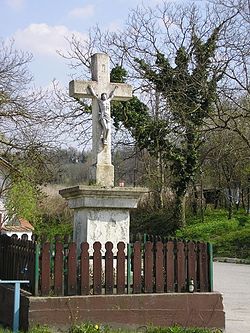
Šibenik, historically known as Sebenico, is a historic city in Croatia, located in central Dalmatia, where the river Krka flows into the Adriatic Sea. Šibenik is a political, educational, transport, industrial and tourist center of Šibenik-Knin County, and is also the third-largest city in the Dalmatian region. As of 2011, the city has 34,302 inhabitants, while the municipality has 46,332 inhabitants.
In Serbo-Croatian, hrvatski is the masculine adjectival form meaning "Croatian", both in the plural and singular; it is hrvatska in the feminine singular, hrvatske in the feminine plural, hrvatsko in the neutral singular, hrvatska in the neutral plural. The word hrvatski is also used to refer to the Croatian language, whereas Hrvatska is the native name for Croatia, the country. As such, all four forms commonly appear in native names of many Croatian government institutions, companies, political parties, organisations and sports clubs, as well as some place names. It may refer to:

Štrigova is a village and municipality in Međimurje County, in northern Croatia.
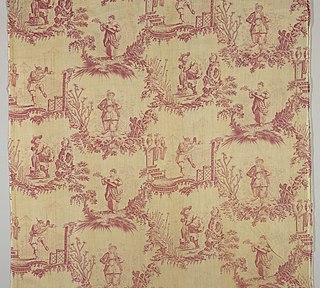
Percale is a closely woven plain-weave fabric often used for bed covers. Percale has a thread count of about 200 or higher and is noticeably tighter than the standard type of weave used for bedsheets. It has medium weight, is firm and smooth with no gloss, and warps and washes very well. It is made from both carded and combed yarns, and may be woven of various fibers, such as cotton, polyester, or various blends.

Hrvatska Kostajnica, often just Kostajnica, is a small town in central Croatia. It is located on the Una river in the Sisak-Moslavina County, south of Petrinja and Sisak and across the river from Bosanska Kostajnica in Bosnia and Herzegovina.
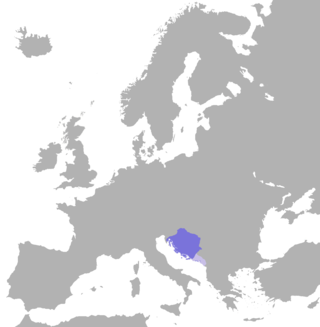
The Kingdom of Croatia, or Croatian Kingdom, was a medieval kingdom in Southern Europe comprising most of what is today Croatia, as well as most of the modern-day Bosnia and Herzegovina. The Croatian Kingdom was ruled for part of its existence by ethnic dynasties, and the Kingdom existed as a sovereign state for nearly two centuries. Its existence was characterized by various conflicts and periods of peace or alliance with the Bulgarians, Byzantines, Hungarians, and competition with Venice for control over the eastern Adriatic coast. The goal of promoting the Croatian language in the religious service was initially introduced by the 10th century bishop Gregory of Nin, which resulted in a conflict with the Pope, later to be put down by him. In the second half of the 11th century Croatia managed to secure most coastal cities of Dalmatia with the collapse of Byzantine control over them. During this time the kingdom reached its peak under the rule of kings Peter Krešimir IV (1058–1074) and Demetrius Zvonimir (1075–1089).

Demetrius Zvonimir was a King of Dalmatia and Croatia from 1076 until his death in 1089. He was crowned as king in Solin on 8 October 1076. Zvonimir also served as Ban of Croatia (1064–1074), and was named Duke of Croatia in around 1075. His native name was Zvonimir; he adopted the forename Demetrius at his coronation.
Paul I Šubić of Bribir was Ban of Croatia between 1275 and 1312, and Lord of Bosnia from 1299 to 1312. As the oldest son of Stephen II of the Šubić noble family, he inherited the title of count of Bribir. He was appointed ban in 1273. He was relieved from duty in 1274, following his involvement in disputes between the Dalmatian coastal cities of Trogir and Split, and was returned to office in 1275.

Otočac is a town in Croatia, former bishopric and present Latin Catholic titular see. It lies in the northwestern part of Lika region, in the Gacka river valley. The population of the administrative area of the Town of Otočac was 9,778 in 2011, with 4,240 in Otočac itself, the majority of whom were Croats (91%).
Janko Mitrović was a harambaša, and the commander of the Morlach army, in the service of the Republic of Venice, from 1648 until his death in 1659. He participated in the Cretan War (1645–69), alongside Ilija Smiljanić, as the supreme commanders of the Venetian Morlach troops, of which he is enumerated in Serb epic poetry. His son, Stojan Janković, followed in his father's footsteps.
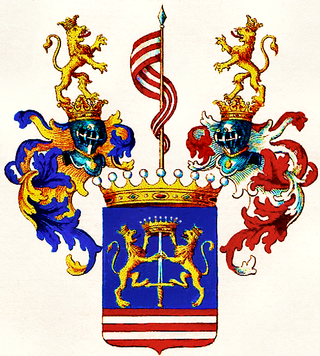
The House of Keglević or Keglevich is a Croatian noble family originally from Northern Dalmatia, whose members were prominent public citizens and military officers. As experienced warriors, they actively participated in the Croatian–Ottoman and Ottoman–Hungarian wars, as well were patrons of the arts and holders of the rights of patronage over churches and parishes.
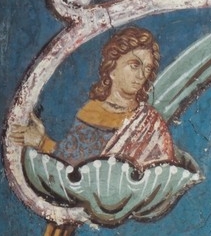
Urošica was a Serbian prince and Orthodox monk, a member of the Nemanjić dynasty. He was the younger son of Stefan Dragutin, King of Serbia 1272–1282 and Syrmia 1282–1316. Dragutin kept Syrmia after passing the rule to Stefan Milutin in 1282. Through mother Catherine of the Hungarian Árpád dynasty, the elder son Stefan Vladislav II was the Duke of Slavonia from 1292 and the King of Syrmia from 1316 until 1325. Urošica took monastic vows as Stefan (Стефан), and is venerated as a saint by the Serbian Orthodox Church on November 11 [O.S. November 24].

The Dobrilovina Monastery is a Serbian Orthodox monastery in Donja Dobrilovina, Mojkovac, northern Montenegro. It is located on the left Tara river banks, in a region known as Potarje, at the beginning of the Tara River Canyon, the deepest river canyon in Europe. The village of Dobrihnina was mentioned in a Nemanjić charter in 1253, though the oldest preserved mention of the monastery dates back to 1592, when the Ottoman authorities allowed the locals to rebuild their monastery in Dobrilovina. In 1609, the current standing church dedicated to St. George was finished; the frescoes were finished by 1613. This church has been pillaged, abandoned, destroyed and renovated several times since its founding.
Paškal "Paško" Jukić was a preacher, musician, and professor of philosophy in the Makarska lyceum in present-day Croatia. He is best known for editing the Italian-Croatian bilingual newspaper Il Regio Dalmata – Kraglski Dalmatin, considered to be the first periodical printed in Croatian, published between 1806 and 1810. Since Jukić belonged to a group of Franciscan friars who went on to become prominent figures in the cultural life of Bosnia and Herzegovina in the second half of the 19th century, some sources compare him to other influential writers of the time such as Vuk Karadžić and Ljudevit Gaj.
Martin Dobrović or Martin Dubravić (1599–1621) was a Catholic priest. After finishing his education in Graz, he became a parson of Ivanić Grad and later became a priest in the Roman Catholic Archdiocese of Zagreb.

Ivan Talovac was a 15th-century Croato-Hungarian nobleman, a member of the Talovac noble family. He served as prior of Vrana from 1439 to 1445, as the first governor of Pakrac in Slavonia, and was a member of the Order of the Knights of Saint John.
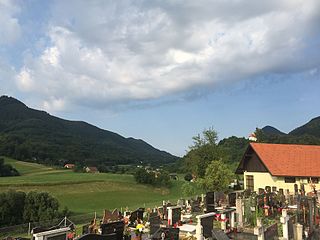
The Municipality of Žetale is a municipality in eastern Slovenia, on the border with Croatia. Its seat is the village of Žetale. The area is part of the traditional region of Styria. The municipality is now included in the Drava Statistical Region.
The twelve noble tribes of Croatia, also known as twelve noble families of Croatia, was a medieval institution of nobility, alliance, or narrow noble community in the Kingdom of Croatia, which can be traced back at least to the 14th century, while the first mention of the institution was in the Pacta conventa document, which is supposedly a later copy of the original from 1102. Regardless of possible earlier references, the first verifiable mention dates from 1350, while the last from 1459. It is considered that by socio-economic power it was composed of lower and middle nobility, which had a privilege of retain and use of heirdom, tax exemption, and limited military obligations to the king. The twelve tribes are Čudomirić, Gusić, Kačić, Kukar, Jamomet, Lasničić, Lapčan and Karinjan, Mogorović, Poletčić, Snačić, Šubić, and Tugomirić.
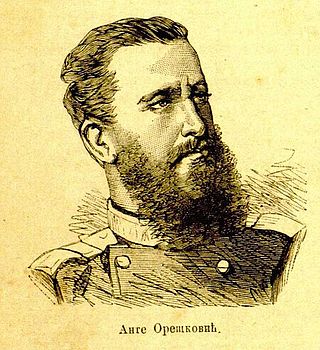
Colonel Antonije "Ante" V. Orešković was a Serbian colonel and a Serb of Military Frontier origin.
